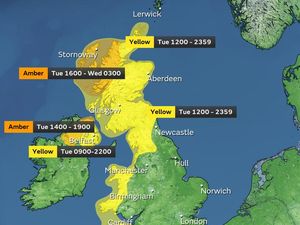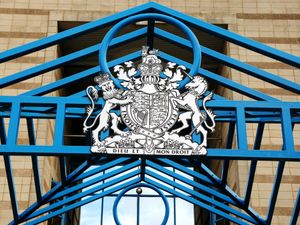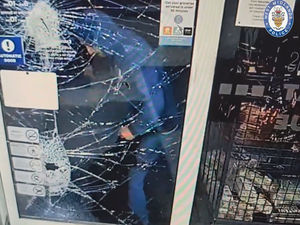Pilot in death crash 'dazzled by sunlight'
A pilot may have had his vision impaired by the setting sun moments before his microlight hit power cables before crashing, air investigators revealed today.
Father-of-two Andrew Tollerton, of Gerald Road, Wollaston, died in a farmer's field near Stourbridge after taking his aircraft out for a flight.
The Pegasus Flex Wing two-seater crashed at Barratt's Coppice, Bridgnorth Road, Stourton, shortly after 5.50pm on October 6.
An inquest jury ruled that Mr Tollerton died as a result of an accident. The 52-year-old lorry driver had suffered head and chest injuries.
The Air Accidents Investigation Branch today revealed findings from its analysis into the circumstances surrounding the fatal crash.
Evidence found the weather conditions on the afternoon were good but the report added: "The sun was low in the sky and the pilot would have been flying almost directly into it during his final approach to the field."
Experts said the aircraft had only been airborne for five to 10 minutes before the accident happened – while his previous flights recorded in his logbook had lasted on average 42 minutes.
The report says the reason for the shortened flight could not be fully established but two possible causes had been identified.
"The flight was conducted late in the day and the pilot may have been concerned about the fading light," the report said.
"Secondly, the pilot had a pre-existing medical condition that had the potential to cause painful symptoms, which could have been distracting or partially incapacitating."
A post mortem report presented during the inquest also stated Mr Tollerton had a number of medical conditions including high blood pressure and kidney stones.
Bringing together the analysis of the accident the report concluded: "The microlight's approach, into wind and towards the low, setting sun, appeared to be under control until it struck the power cables.
" Although the pilot had operated from the field before, the angle of the sun and the close orientation of the power cables with the surface ruts in the field, together with the location of the power cable support poles, may have made the cables difficult to detect. The pilot did not appear to take any avoiding action, indicating that he did not see the cables or that he only did so when it was too late to avoid them."
The report also stated Mr Tollerton did not have a pilot's licence and not completed the training. The logbook showed that he undertook 12 training flights between June 2006 and August 2007, flying for a total of 12 hours five minutes. Since then, he had recorded a further 82 flights in microlightsut experts claimed none appeared to have been flown under instruction.




